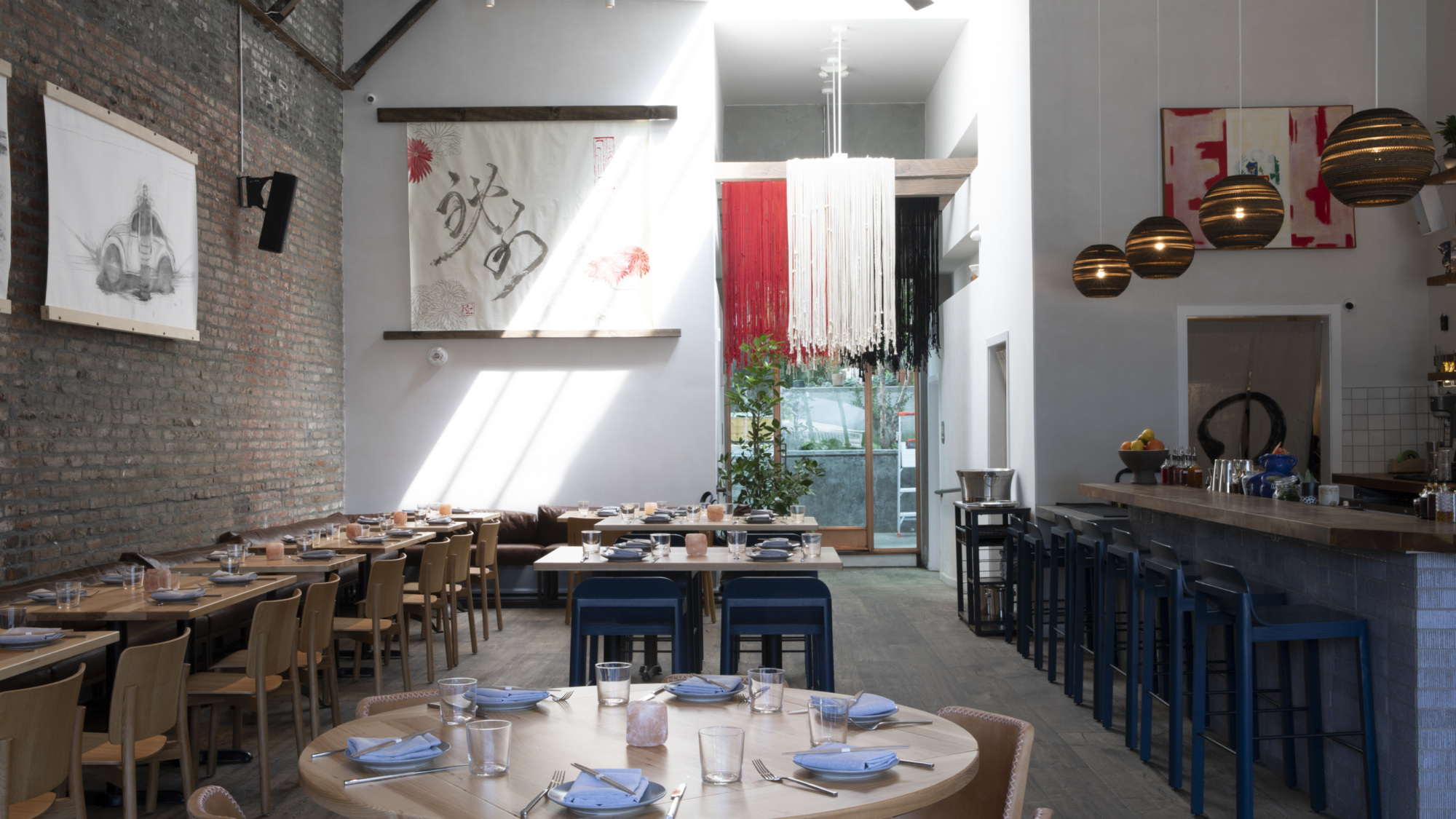
Five Things to Know About Causita, Silver Lake’s Sleek Peruvian Spot
Before you go to a restaurant, what do you want — or need — to know the most? In our series The Rundown, we’re sharing all the essentials about Resy restaurants — our newly opened, old, and soon-to-be-favorite spots.
Angelenos are no strangers to Peruvian food — much to the credit of Lima-born chef Ricardo Zarate. He’s the person responsible for opening Mo-Chica at Mercado la Paloma back in 2009, followed by a pop-up restaurant called Test Kitchen, and later Picca in West L.A., along with Paiche in Marina del Rey and Rosaline in West Hollywood. Suffice it to say: The man is prolific.
While Rosaline continues to hum along in WeHo, Zarate moved east to Silver Lake to open Causita on Sunset Boulevard this April, in partnership with David Rosoff of the buzzy Bar Moruno next door. The restaurant celebrates Nikkei cuisine, or the melding of Peruvian and Japanese food, sparked by the Japanese diaspora that immigrated to Peru in the late 1800s. Here are five things to know about the new restaurant.


1. Nikkei translates to “Japanese ancestry.”
That influx of Japanese migrants, precipitated by a variety of factors, means that Peru now has the second-largest ethnic Japanese population in South America (after Brazil). “Not only did the Japanese bring ingredients with them when they came to Peru, like soy sauce, miso, and ginger, but they also had to be resourceful and use what was available to them when they arrived,” Zarate explains. Nikkei cuisine — a passion of Zarate’s, though this is his first professional deep dive into it — is marked by the combination of Peruvian ingredients and Japanese cooking techniques, and in Causita’s case, a decidedly modern approach that freely borrows flavors from around the world.
Dishes include pork belly-stuffed steamed buns dressed with Parmesan cheese, rocoto pepper sauce, and beets; and udon noodles with shiitake mushrooms, Peruvian pesto (a blend of spinach, basil, aji amarillo, Parmesan, feta, and cilantro), wasabi tobiko, and roasted onion jus — the latter a personal favorite of Zarate’s, as the pesto is a riff on his grandmother’s recipe.
- David Rosoff Is Back in Silver Lake With Bar Moruno (But That’s Not All)
- The Resy Guide to Monday Night Dining in Los Angeles
- A Local’s Guide to Eating Your Way Through Long Beach’s Incredible Cambodian Restaurants
- Everything You Need to Know About Ray Garcia’s Asterid
- How Salt’s Cure Became L.A.’s Quintessential Breakfast Joint
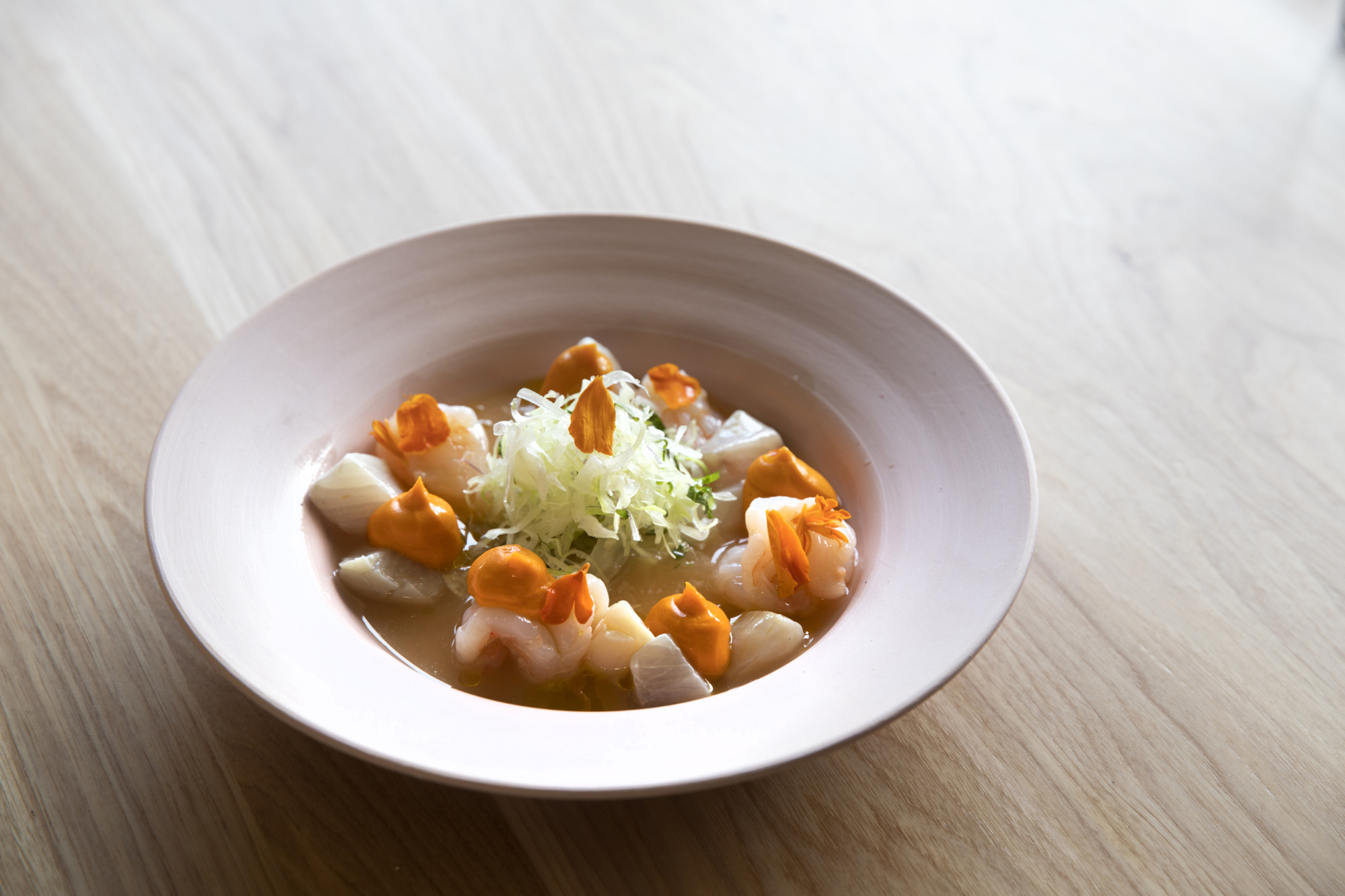
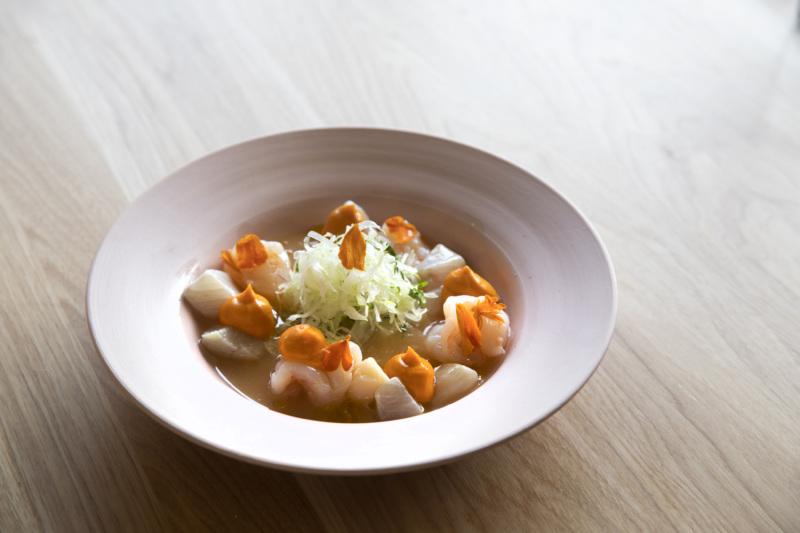
2. Don’t sleep on the seafood.
The Japanese helped popularize eating seafood in Peru, and fish has always been a big part of Nikkei cuisine. The sea-faring options at Causita sparkle with fresh, vibrant flavors: There’s a delicate starter of ceviche mixto with kanpachi, shrimp, scallop, and leche de tigre dressed with a kiss of citrusy tartness, as well as larger options like a crispy whole branzino slathered in butter bean-and-artichoke mousse and jalapeño sauce, served with a handful of charred roasted tomatoes still on the vine.
Traditional Nikkei seafood dishes are represented with the salmon tiradito, thinly sliced raw fish served with beet jerky, ponzu, horseradish mousse, gochujang, and leche de tigre. “The style of fish has a very delicate, precise cut, which the Japanese brought to Peru,” Zarate says. In his 2015 cookbook “The Fire of Peru,” the chef writes, “The folklore around tiraditos centers around local pescadores, fishermen. When they came in from their early morning fishing runs, they would supposedly slice off thin strips of fish as they cleaned their catch for snacks. They tossed the raw fish strips onto the hot rocks along the coastline for a few seconds to barely sear the fish and ate the fish right there, with a squeeze of lime juice. I’ve always liked the fisherman story, and the word tiradito refers to the Spanish verb tiara, or ‘to throw,’ so who knows, maybe there is some truth in there.”


3. The name “Causita” is multi-layered.
Causita is slang for “best mates” or “best friends,” the spirit of which Zarate wanted to infuse throughout the restaurant. The warm space incorporates art from Japan and Peru, as well as personal touches, like plateware Zarate designed himself to highlight the colors and flavors of both countries. That said, “causita” originates from the word “causa,” a traditional casserole-like dish that uses chilled mashed potatoes as a base and can be topped with just about anything. At Causita, Zarate serves a trio of causitas. They start with a paper-thin strip of cucumber and a soft puff of blended potato that’s then topped with tomato (with rocoto aioli and seaweed salt), salmon (with preserved lemon, aji amarillo, and yuzu), and tuna (with rocoto and truffle aioli).
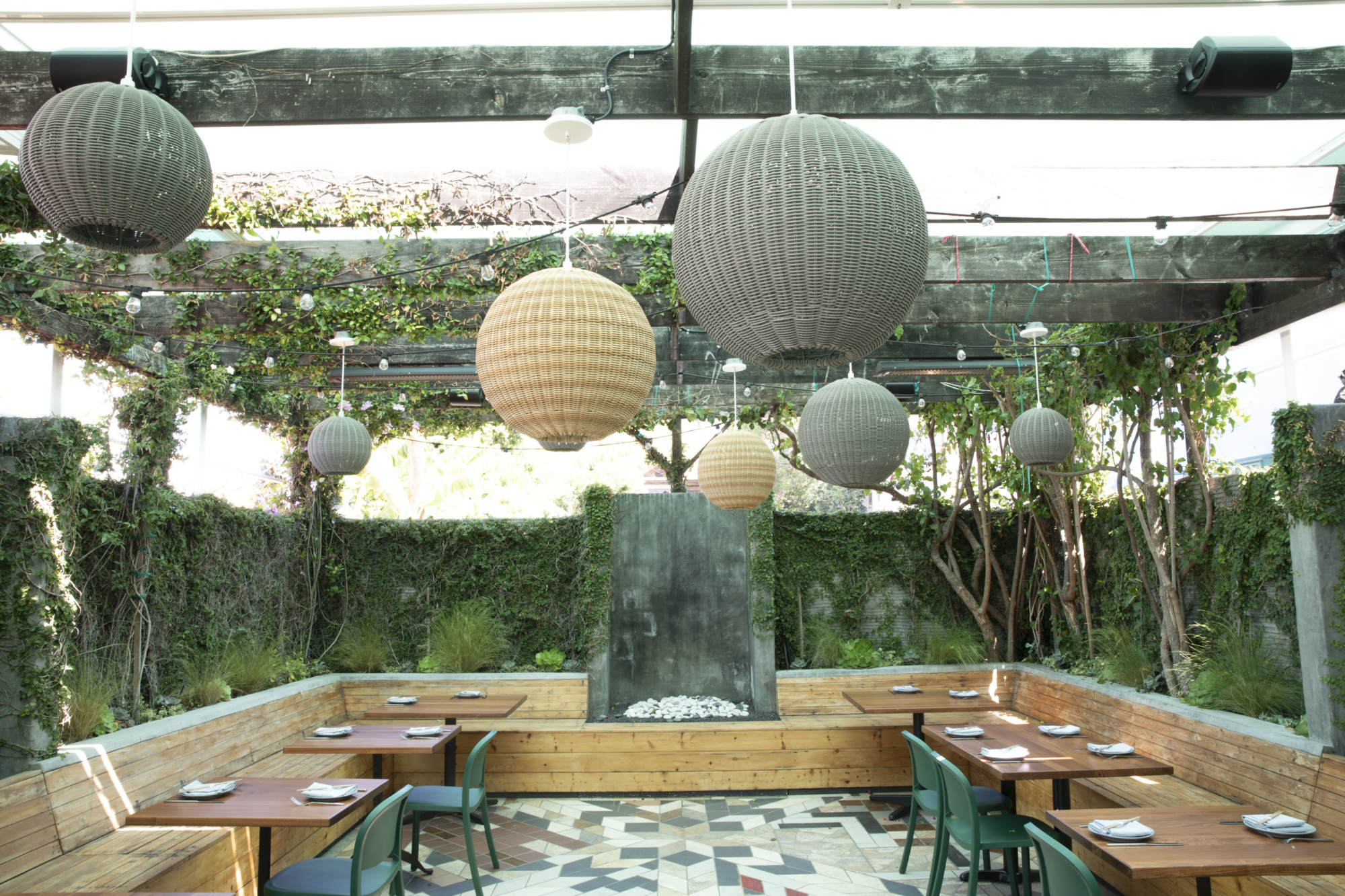

4. There are multiple spaces to dine.
The restaurant is marked by two different spaces for a meal: the main dining room and a lush garden out back (both designed by Studio UNLTD). The dining room keeps things simple and breezy, with exposed brick, a compact blue bar, simple wooden tables, and a few statement pieces like a dramatic quipu — an ancient Incan device that used colored threads and knots to track important community information — fashioned from colored threads knotted in various ways and designed by Peruvian artist Rudolph Castro. The patio feels like more of a party, with a multicolored tiled floor, green chairs, and wraparound wooden banquette.
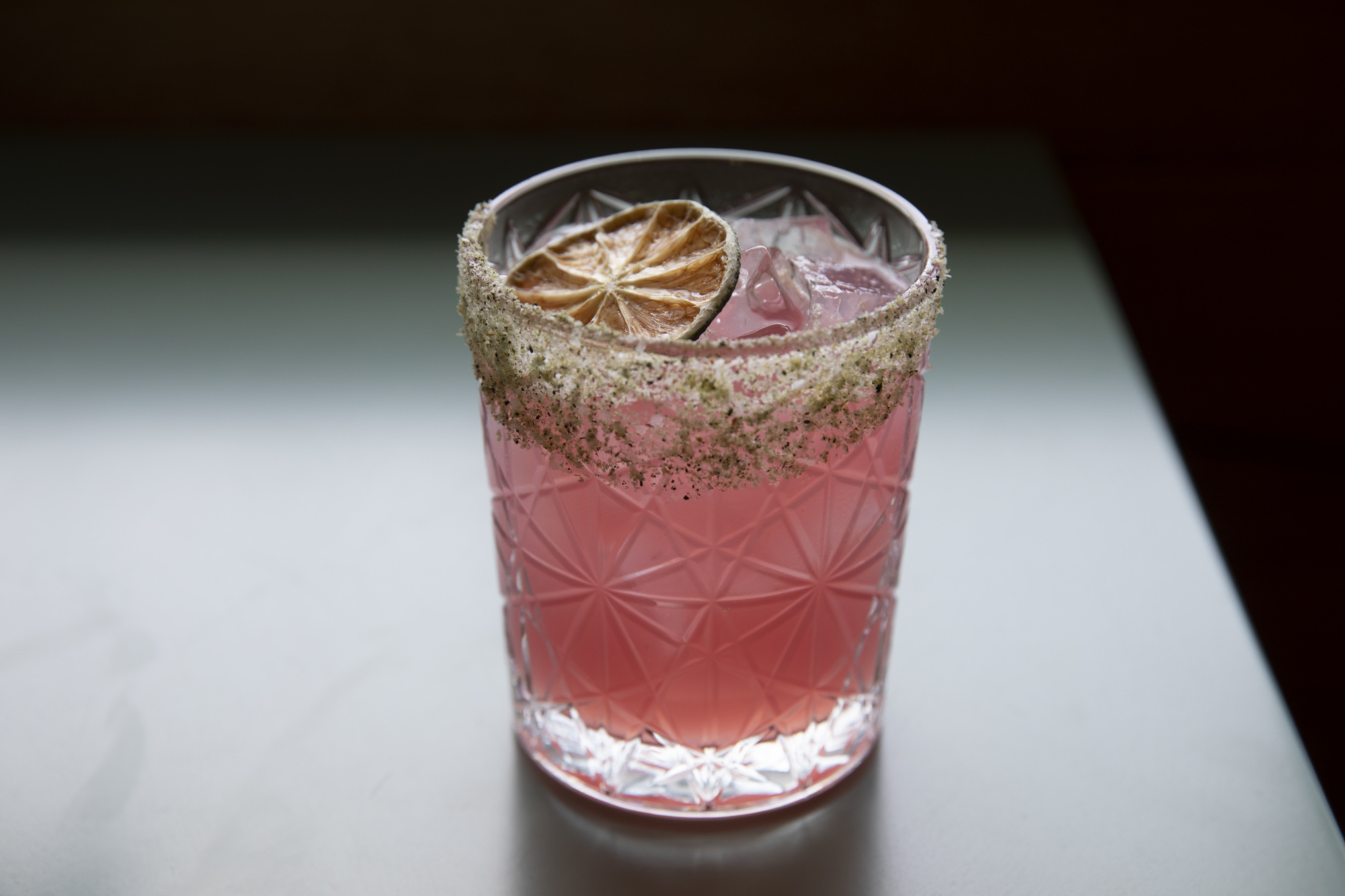

5. This isn’t your grandmother’s pisco sour.
Zarate tapped Ramsey Musk (The Proper Hotel Group, Ma’am Sir) to develop the cocktail menu. In doing so, Musk played on the flavors of Nikkei, centering the cocktails on Japanese whisky and the beloved Peruvian spirit pisco to create drinks like the Oh Captain, My Captain (Macchu pisco, Lo-Fi sweet vermouth, Hans Reisetbauer carrot eau de vie, and carrot-top oil) and Altitude Sickness (Wai 45 Japanese whisky, Jack Daniels rye, kirsch, chamomile, and miso-pomegranate caramel). Musk also leaned heavily into ingredients native to Peru and Japan, in particular bitter flavors like passionfruit (maracuya), guava, wasabi, and awayuki strawberry to create the menu.
Musk even gave the iconic pisco sour an update: Given allergies and aversions to egg whites — and the fact that he himself is allergic to chickpeas (so aquafaba wasn’t an option) — Musk had to experiment with new ways to make the drink’s signature foam. “I decided to play with a foaming agent that my friend Mike Capoferri uses at Thunderbolt, methylcellulose. Natural and vegan, it’s typically used to create gelatins and to thicken sauces in cooking, but with the proper ratio it adds a really amazing body to the drink and froths up like a dream,” he says. The result? A pisco sour that is all foam upon serving but dissolves into a balance of foam and liquid as it sits — and gets punched up with the flavors of yuzu and lychee.
Karen Palmer is a Los Angeles-based food writer who spends most of her free time thinking about pizza and pasta. Follow her carb-rich lifestyle on Instagram. Follow Resy, too.
















